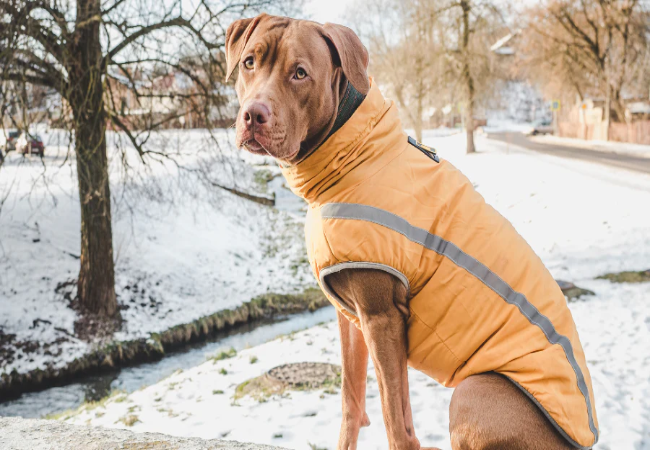Keep Your Dog Warm 2025: Vet-Approved Winter Comfort Tips ❄️🐶

In this article
Keep Your Dog Warm 2025: Vet-Approved Winter Comfort Tips ❄️🐶
By Dr. Duncan Houston BVSc
Winter can be a challenging time for dogs, especially small breeds, short-haired dogs, or older pets. Cold temperatures can lead to discomfort, hypothermia, and other health issues. By taking simple precautions, you can ensure your furry friend stays safe, warm, and happy during the chilly months.
🏠 Provide Proper Shelter
Whether your dog stays indoors or outdoors, a warm and safe sleeping area is essential:
-
Indoor dogs: Ensure their bed is away from drafts and cold floors. Provide soft blankets or a raised bed to retain heat.
-
Outdoor dogs: A well-insulated doghouse with a raised floor, door flap, and cozy bedding (straw, hay, or blankets) can help protect against the elements.
🧥 Dress for the Weather
Some dogs need extra protection in winter:
-
Small, thin-coated, or short-haired breeds may benefit from a dog sweater or coat during walks.
-
Make sure clothing fits properly and allows your dog to move freely without chafing.
⏱ Limit Time Outdoors
-
Keep outdoor sessions short during freezing temperatures.
-
Observe your dog for signs of cold, such as shivering, whining, lifting paws off the ground, or slowing down.
-
Always ensure they have access to a warm, dry space indoors after outdoor activity.
🐾 Protect Their Paws
-
Snow, ice, and de-icing chemicals can irritate paw pads and even cause frostbite.
-
Wipe paws with a warm cloth after walks.
-
Consider dog booties for added protection on icy or salted surfaces.
🏃 Keep Them Active Indoors
Winter shouldn’t mean boredom:
-
Play indoor games, practice training, or set up a mini obstacle course.
-
Interactive toys and puzzle feeders can provide mental stimulation when outdoor activities are limited.
🔥 Use Safe Heating Options
-
Heated pet beds or pet-safe space heaters can provide extra warmth.
-
Always follow manufacturer guidelines and supervise to prevent accidents.
🍲 Maintain a Healthy Diet
-
Dogs may need additional calories in colder months to generate body heat.
-
Consult your veterinarian to adjust food intake based on age, weight, activity level, and breed.
✂️ Grooming Matters
-
A clean, well-groomed coat insulates better against the cold.
-
Avoid shaving your dog in winter.
-
Regular brushing prevents tangles and mats that can reduce warmth.
⚠️ Monitor Your Dog’s Health
Watch for signs of cold-related stress:
-
Shivering or trembling
-
Reluctance to move
-
Lethargy or whining
If you notice persistent signs of discomfort, contact your veterinarian promptly.



